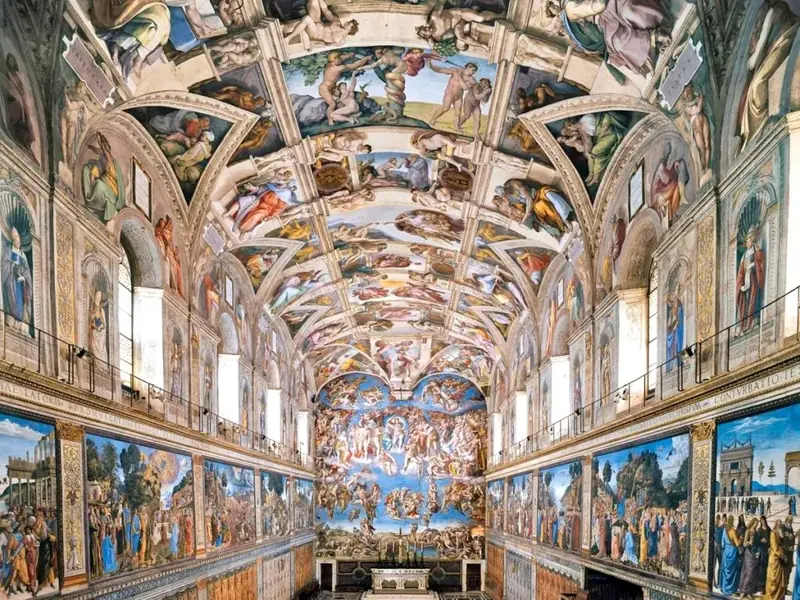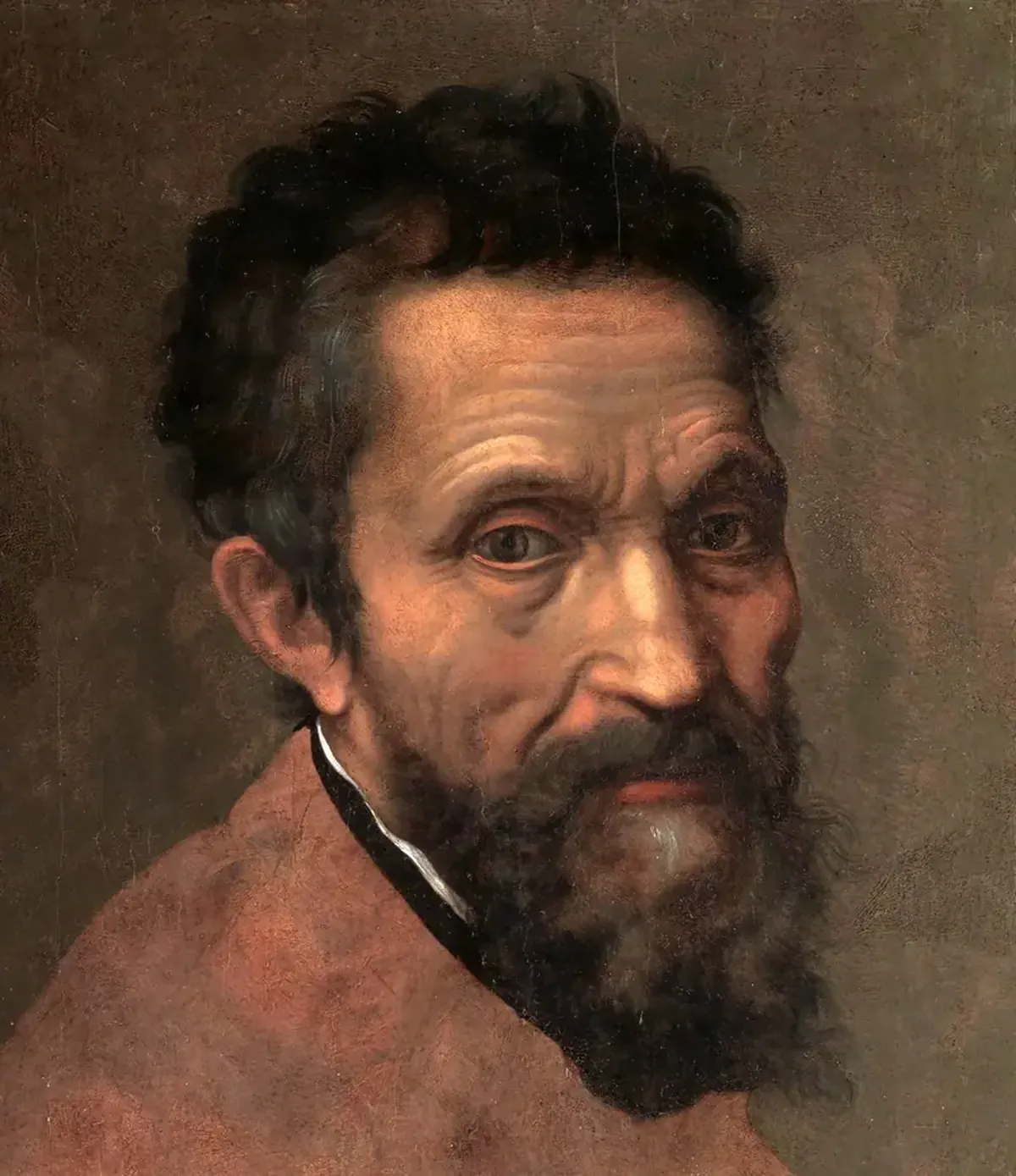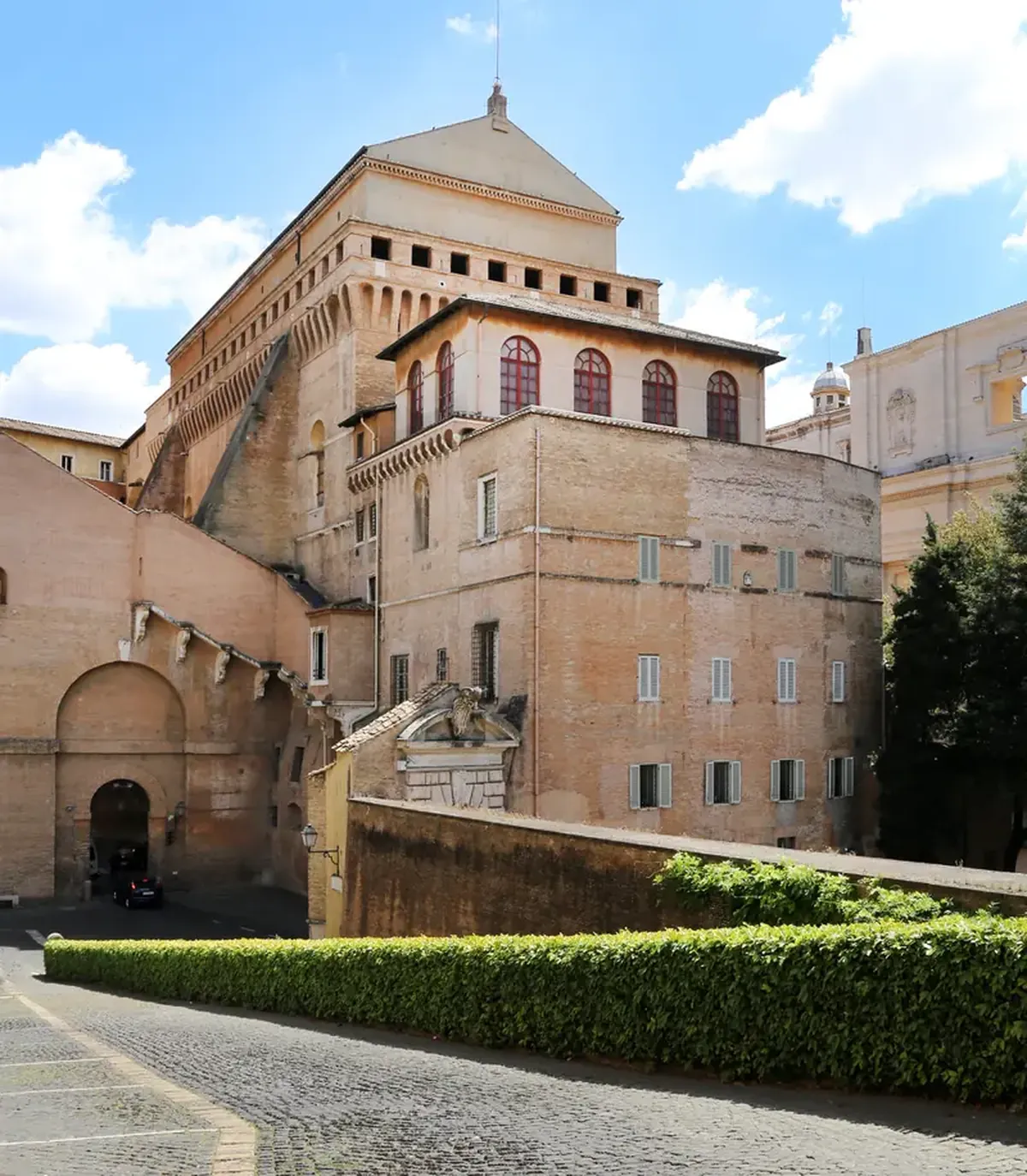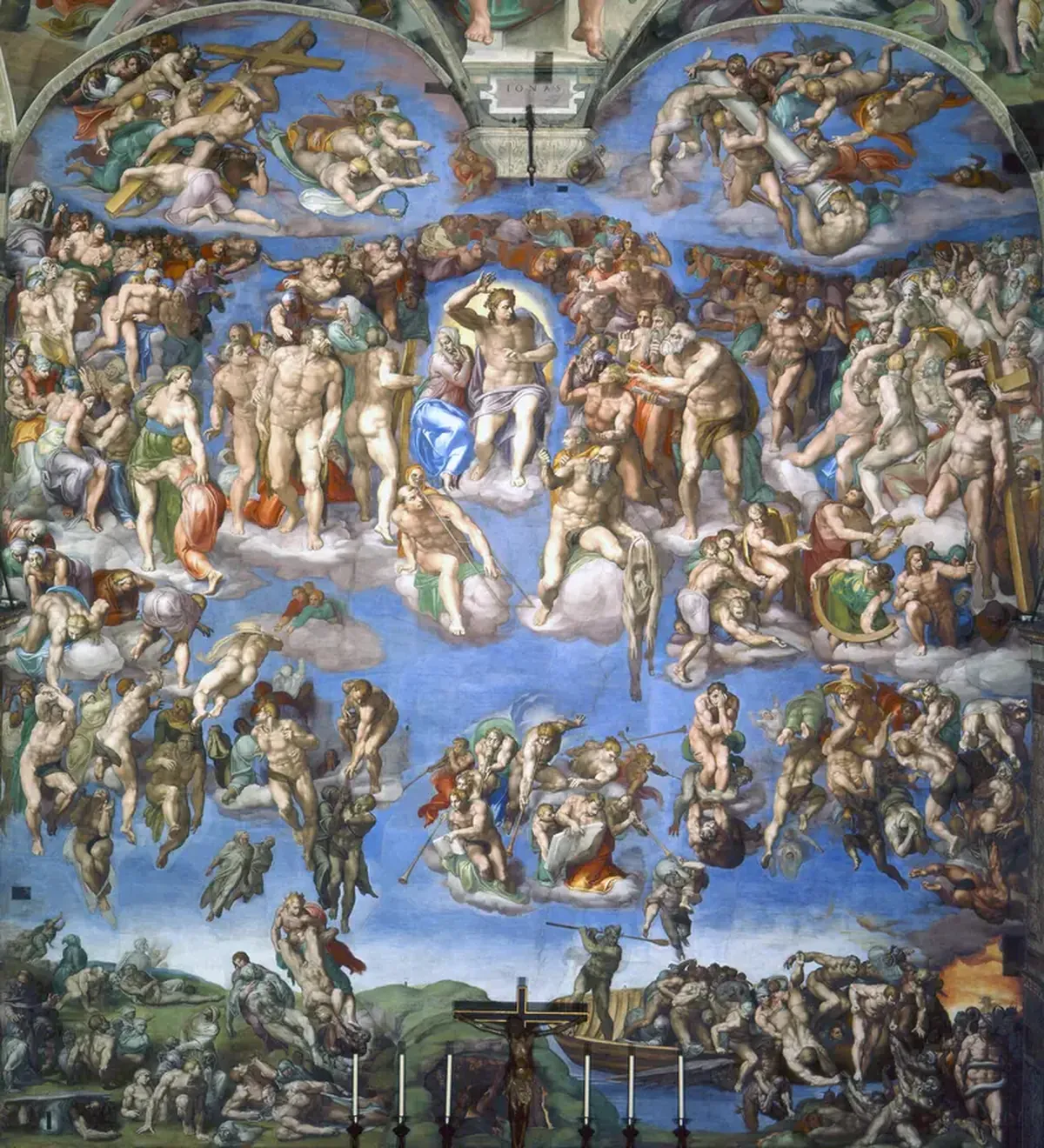
The Sistine Chapel, located in Vatican City, was constructed between 1473 and 1481. Many renowned artists of the time, including Sandro Botticelli, were invited to contribute to its frescoes, but most declined or simply ignored the offer. It wasn’t until 1508 that the famous Florentine master Michelangelo Buonarroti took on the task. In creating the frescoes, Michelangelo surpassed even the genius of Leonardo da Vinci, who never quite mastered the technique.

Portrait of Michelangelo, Daniele da Volterra, 1545
“Painting is not my art”: The Creation of a Masterpiece
There is a belief that Michelangelo painted the chapel’s frescoes while lying on his back. In reality, he stood upright with his head tilted back. This demanding work took a toll on the artist’s health. At the start of the project, he was only 33 years old, but he had already developed arthritis and scoliosis. Additionally, poor lighting severely affected his eyesight. Contemporary accounts suggest that Michelangelo could only read his books by holding them above his head.
As he labored on the masterpiece, the artist became increasingly fatigued and drained. He even penned a poetic letter to his friend Giovanni da Pistoia, expressing his struggles and concluding with the lines: “I am not in the right place; I am not a painter.” Working at such heights also added to the challenges of creating the frescoes. Michelangelo designed special scaffolding that allowed him to work across the entire ceiling without disturbing those below, as services were held in the chapel.
Controversial Authorship
It is believed that Michelangelo worked on the frescoes alone, but during restoration, it was revealed that he was actually assisted by three students: they depicted children and architectural details, each using their own technique.
The central frescoes and the side portions of the scenes were executed solely by the artist. Here, he portrayed seven prophets of Israel, who, according to belief, foretold the future. Interestingly, despite the complexity and grandeur of his plans, Michelangelo painted the frescoes without sketches, showcasing the incredible nature of his talent.
The Secret of Adam
Scholars continue to unravel the secrets and codes of the Sistine Chapel. For instance, discussions persist regarding the famous fresco “The Creation of Adam”—a painting where God and Adam, depicted reclining, barely touch each other with their fingertips. Experts propose a theory that the figure of God and the surrounding angels resembles the shape of a brain. They believe that Michelangelo celebrated the gift of intellect bestowed upon the first man. Moreover, the depiction of God astonished onlookers, as Michelangelo portrayed God the Father with a muscular body and a long white beard, which was quite innovative in the development of Christian art.

Frescoes: Timelessness
The master’s creation has proven to be more resilient than the artist himself during its creation: for five centuries, humanity has reveled in this magnificent work. The frescoes have undergone restoration multiple times over the centuries, with the most significant restoration taking place in the 1980s and 1990s. Notably, restorers removed layers of dust, grease, and grime from the fresco “The Last Judgment,” restoring its original vibrancy. With the help of specialists, the figures were also stripped of fig leaves covering their naked bodies, which had been added by order of Pope Pius IV. In addition to restoring the frescoes, the latest restoration installed a complex air conditioning system to preserve the artwork for as long as possible. Currently, experts are concerned about the constant flow of tourists, which creates ongoing vibrations that could damage the artwork.
However, this building is not just a popular pilgrimage site and tourist attraction: since 1492, the chapel has served an important religious function—the election of a new Pope, signified by the white smoke rising from a special chimney on the chapel’s roof.

The building of the Sistine Chapel in Vatican City.
A Return After a Quarter Century
At the invitation of Pope Clement VII, Michelangelo returned to paint the altar wall in the Sistine Chapel. This monumental fresco was “The Last Judgment.” Once again, four years of tireless work ensued, with all the characters painted by the artist’s own hand. In the depiction, the artist even found a place for himself: in the figure of Saint Bartholomew. Michelangelo faced criticism for incorporating pagan mythology into Christian themes and for using nude figures, but despite the negative reactions, no one dared to make changes to his work during his lifetime: Michelangelo’s authority was indisputable!

Goethe said, “It is hard to imagine what one person can achieve without having seen the Sistine Chapel.” Michelangelo shattered all stereotypes and proved that a person can accomplish anything. The evidence lies in the incredibly profound world within the exquisite works of this genius.
